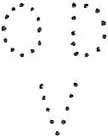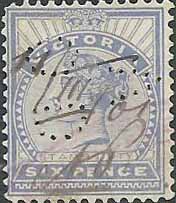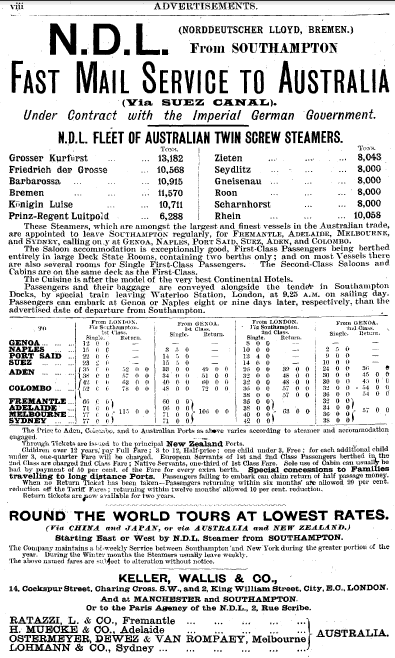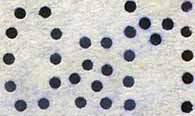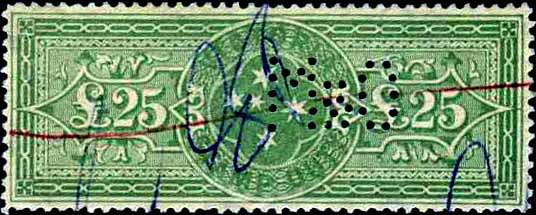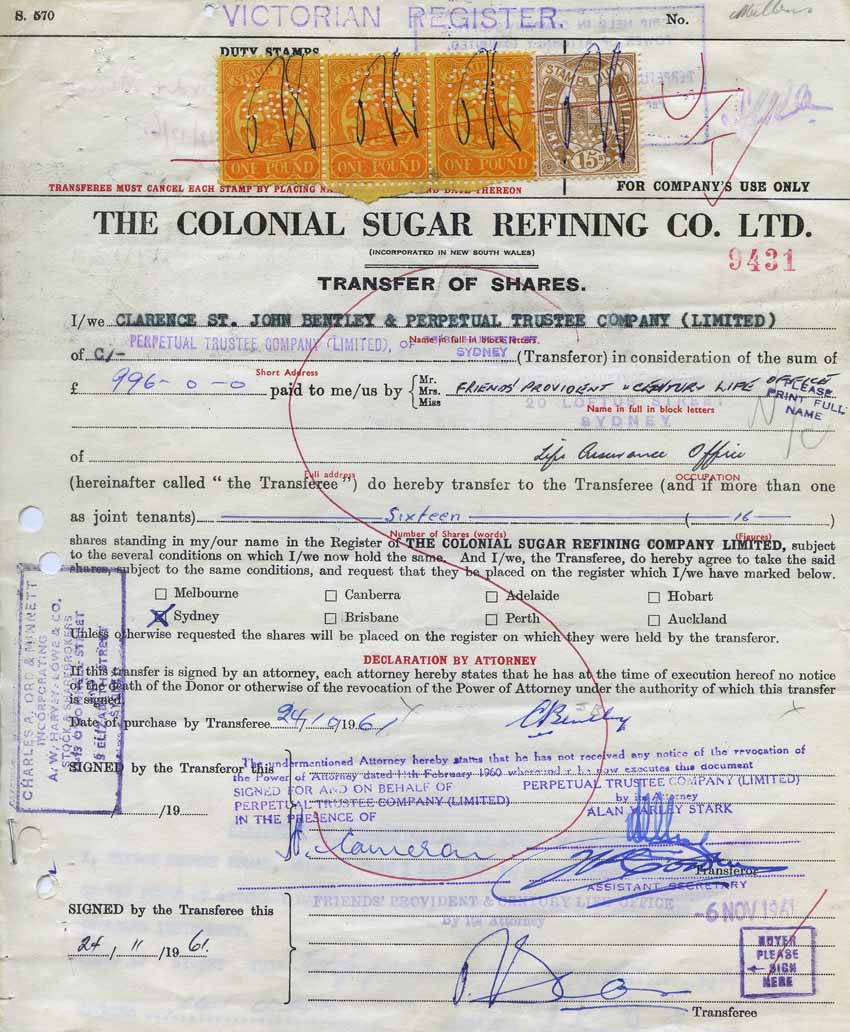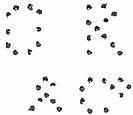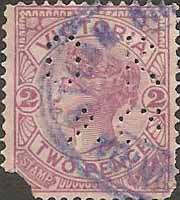|
Private Revenue Perfins of Victoria An Elsmore Coath production The authors would welcome your comments additions or input into this work A B C D E F G H I J K L M N O P Q R S T U V W Y Other O -------------------------------------------------------- OD/V.a
User: Ostermeyer, Dewez &
Van Rompaey & Co Shipping Agents and Wool Brokers Address: 480 Collins St, Melbourne, VIC Revenue Use: 1886-1899 Series, inscribed 'STAMP DUTY' 6d 1902 Numeral Series 6d (Bistre) Rarity Scale: 1886-1899
Series 6d R4 1902
Series 6d R4 Background: Initially
the company traded as Ostermeyer, Dewez and Co
(some source Ltd) from at least as early as
1884. They had offices in Currie St,
Adelaide, 17 Macquarie Place, Sydney, Melbourne,
and London. At this stage they seemed to
have been involved in the importation of Iron and
fencing products.
The activities of the
company in Adelaide and Sydney are supported by
the use of perforating devices in the format of
OD/C, at these locations. Adelaide (1895) and
Sydney (1894-1904) are found on postage stamps. The London Gazette
reports in August 1896 that the company of
Ostermeyer, Dewez and Co was wound up effective
March 1896 in a matter signed by the owners who
were Gustav Ostermeyer, Toussaint Dewez, Alfred
Van Rompaey and W Leslie Whyte. From this point the
company is known as Ostermeyer, Dewez and Van
Rompaey & Co. Furthermore, the company seems
to change its focus from importing to exporting
and from Iron products to wool.
In 1899 the Sydney
office moved to 52-54 Phillips St, Sydney, NSW.
The format of the
companies perforating devices support the change
in company name as they become OD/V and come into
service in Melbourne in 1899 and Sydney in 1905.
Notably the Sydney OD/C device is phased out at
the time of the arrival of the Sydney OD/V device,
which supports the transition of Ostermeyer, Dewez
and Co to Ostermeyer, Dewez and Van Rompaey &
Co.
The activities of the
company in the first decade of the 20th century
show that they are riding the trend to export wool
directly to European ports in lieu of the previous
practice of channeling all of it to England.
Loading records support this by showing the
company favouring ports such as Antwerp (Belgium)
and Bremen (Germany).
This may account for
the fact that the company seems to cease
operations in 1914-15, but the more likely
explanation is their German linkages and the
advent of WW1.
Device: As discussed
in the Background above the company had a series
of devices that they used in their offices in
Adelaide, Sydney, and Melbourne and that these
devices were in the formats of OD/C and later
OD/V.
The Adelaide OD/C
device and the Melbourne ODV.a device are both
found used on revenues stamps as well as postage
stamps however the Sydney OD/C and OD/V devices
are only found used on postage stamps. All
the company’s devices are customised single die
devices. The OD/C device of Adelaide was only in
service for a short period between 1894-1895 and
the OD/V Melbourne came into service in 1899 and
remained in service until at least 1914.
Related Patterns: Refer to other Ostermeyer, Dewez and Co or Ostermeyer, Dewez and Van Rompaey & Co. patterns in: -------------------------------------------------------- O&M.a
User: C A Ord & Minnet Stockbrokers Address: 13-15 O'Connell St, Sydney, NSW Revenue Use: 1911 Series 6d, 9d, 1/-, 1/6d, 2/- 1915 Series 2d, 3d 1920-1966 Series (perf 11 issues) 2/6d, 3/-, 4/- 5/-, 5/6, 6/-, 8/-, 10/-, 15/-, £1, 30/-, £2, £5, £10, £25 1966 Series 1c, 2c, 3c, 4c, 5c, 8c, 10c, 15c, 20c, 25c, 30c, 40c, 50c, 60c, 75c, $1, $1.50, $2, $3, $4, $5, $20, $50 Rarity Scale:
1911 Series 6d R3, 9d R3, 1/- R4, 1/6d R3, 2/- R4
1915 Series 2d R4, 3d R2
1920-1966 Series 2/6d R4, 3/- R3, 4/- R1, 5/- R3, 5/6 R5, 6/- R4, 8/- R4, 10/- R2, 15/- R4, £1 R3, 30/- R4, £2 R3, £5 R4, £10 R3, £25 R4
1966 Series 1c R4, 2c R4, 3c R4, 4c R3, 5c R3, 8C R4, 10c R2, 15c R4, 20c R3, 25c R4, 30c R4, 40c R2, 50c R2, 60c R4, 75c R2, $1 R2, $1.50 R3, $2 R2, $3 R4, $4 R4, $5 R4, $20 R4, $50 R4
Background: Charles Ord left a senior position in the Bank of New South Wales and bought a seat on the Sydney Stock Exchange in 1949 and in 1951 he joined with Jack Minnett to form the broking firm, Ord and Minnett. Charles Ord and Jack Minnett knew each other professionally but there friendship was based mainly on the time they spent together while serving in the Australian Army during World War Two.
The next three decades saw the business grow steadily, initially through positioning themselves to provide the London Stock Market access to Australian shares. Later the firm was involved in the establishment of investment trusts, in particular in the Australian mining industry. This in turn led to the establishment of more general funds management organisations.
The company was involved in some key company floats including Pioneer Sugar Mills and Lend Lease Corporation before expanding further into merchant banking, initially in partnership, and later in joint venture with Bankers Trust in the company which became Ord-BT.
In 1960 Ord Minnett acquired A W Harvey Lowe & Co and in 1964 they acquired the long established firm of T J Thompson and Sons and the combined company became Ord, Minnett, T J Thompson and Partners until 1976 when it was renamed Ord Minnett.
Device: The O&M.a device was located in Sydney and the resulting O&M.a pattern is found on revenue stamps of NSW, where it is numbered O&M.b, see Device section of the O&M.a pattern in the NSW section for an explanation of this anomaly. But the O&M.a pattern is also found on the revenue stamps of Queensland, Victoria, South Australia and Western Australia, where it is numbered O&M.a.
Evidence from Share Transfer documents indicates that transactions from all States were handled through Ord and Minnett’s Sydney office at O’Connell Street. This suggests that the revenue stamps were sourced from each State and sent to Sydney for perforation and subsequent use.
This was also the practice of other Sydney based Stock broking firms such as Constable and Co and A D Meares and Bishop.
The O&M.a device seems to have been a single die device, but the authors have examples of close horizontal multiple strikes that show consistent separation between pattern strikes. This would normally indicate a multi die device but there is much evidence for a single die device as well.
Most multiples show random separation and further the pattern is found as a single horizontal centrally located strike on the large format Victorian £10 revenue which would not be possible with a multi die device with close dies with separation to suit the NSW numeral series. Most likely the device had a single die.
Related patterns: Refer to other Ord and Minnett patterns in:
NSW: O&M.a O&M.b
QLD: O&M.a
SA: O&M.a
WA: O&M.a -------------------------------------------------------- OR/&Co.a
User: Otto Romcke & Co (later Pty Ltd) (unconfirmed) Timber Merchants and Importers, later Manufacturers
Address: 189 Lorimer St, South Melbourne, VIC
Later Corner of Lorimer and Ferrars St, South Melbourne, VIC Revenue Use: 1886-1899 Series, inscribed 'STAMP DUTY' 2d Rarity Scale:
1886-1899 Series 2d R4
Background: The company that was to become Otto Romcke & Co Pty Ltd dates from in Adelaide in 1884 when Romcke, a Norwegian, joined with fellow Norwegian, Captain G Gunnersen to establish a Timber business in Melbourne. Gunnersen was a ships Captain and it appears that the partnership did not last long as Gunnersen broke away to form Gunnersen Pty Ltd, a shipping company also based in Melbourne.
Otto Romcke & Co where known to have had a timer yard at 189 Lorimer St, South Melbourne, but this was destroyed by fire in 1904. Later the company is stated to be at the corner of Lorimer and Ferrars Sts, South Melbourne. This is on the city side of South Melbourne and there have been many changes to roads and these two no longer intersect.
Otto Romcke & Co where regular importers of timber from Scandinavia and later the West Coast of the USA and New Zealand.
In April 1918 the company conducted a Auction of their entire stock as they were changing business direction to focus on their manufacturing of “Eucalpt” Brand 3 Ply.
The change of business does not seem to have been permanent as the company is known to have been still importing and wholesaling timber as late as 1925.
Device: The OR/&Co.a pattern is made from a temporary die in a single die format. Such devices, which could produce these temporary patterns, were used by some Stamp Vendors in Melbourne from late 1800’s and early part of the 20th Century.
This particular pattern is known over the period 1898-1899. It is most commonly found on postage stamps. On postage stamps there is some reported variation in the layout of the pattern with different separation between letters etc. with 5 reported layouts. However this variation is not reported on revenue stamps and to date only one layout is reported.
Related Patterns: Nil -------------------------------------------------------- A B C D E F G H I J K L M N O P Q R S T U V W Y Other © copyright 2011 |
